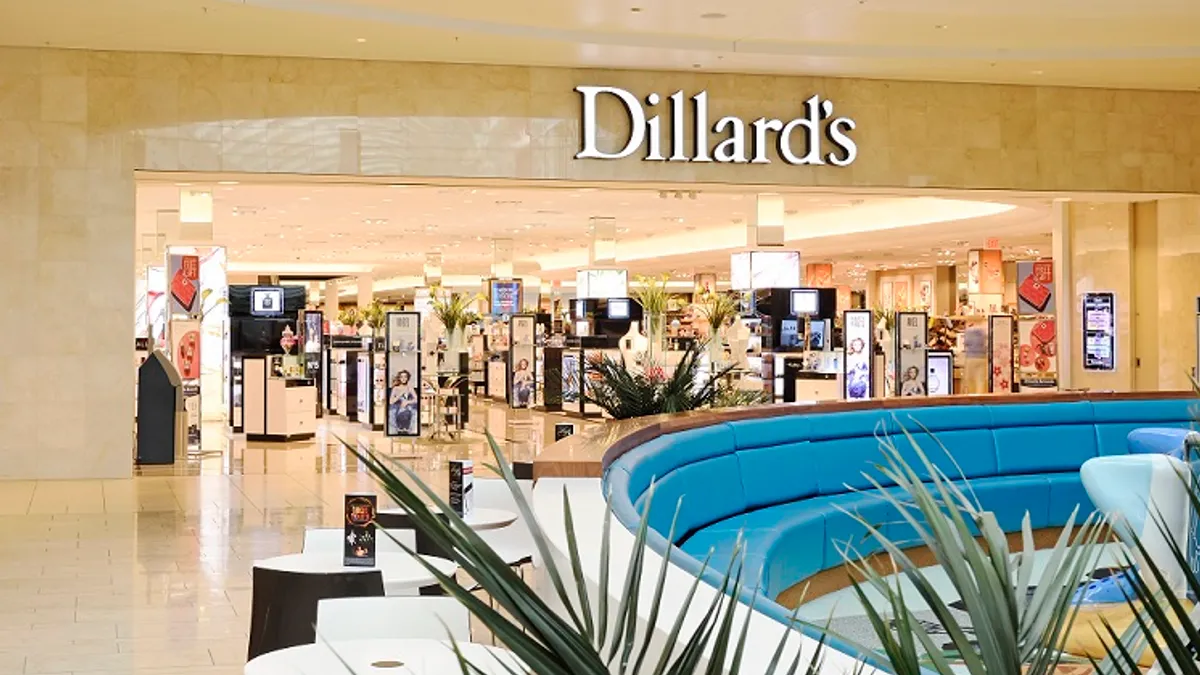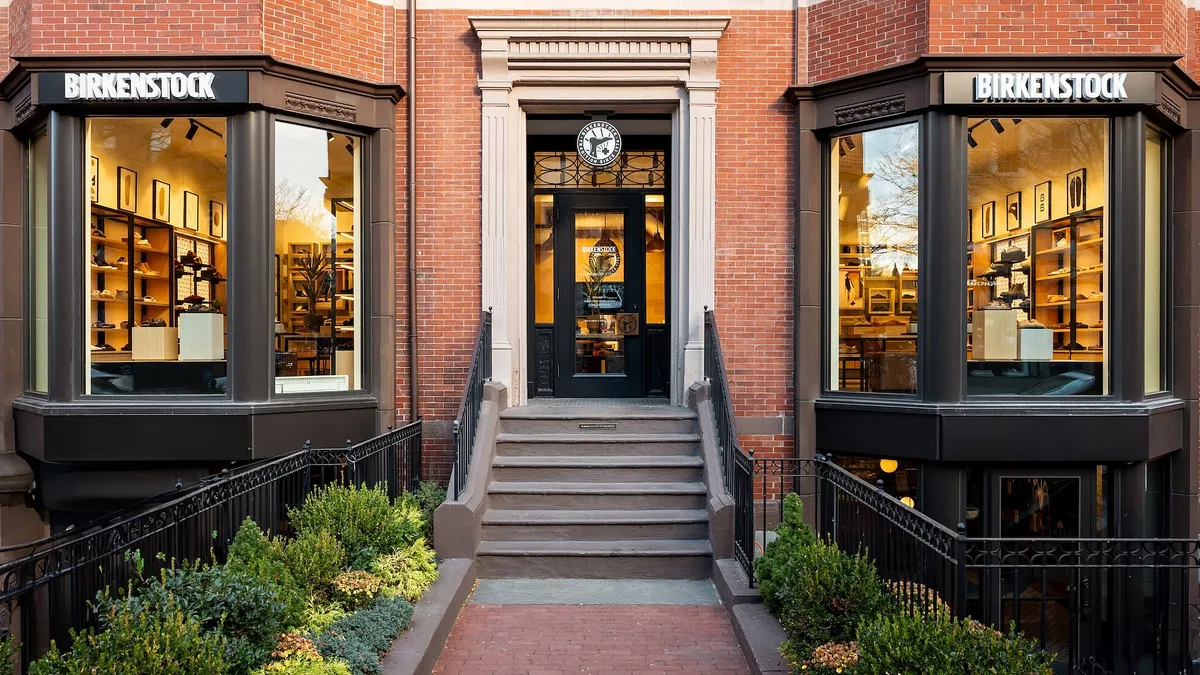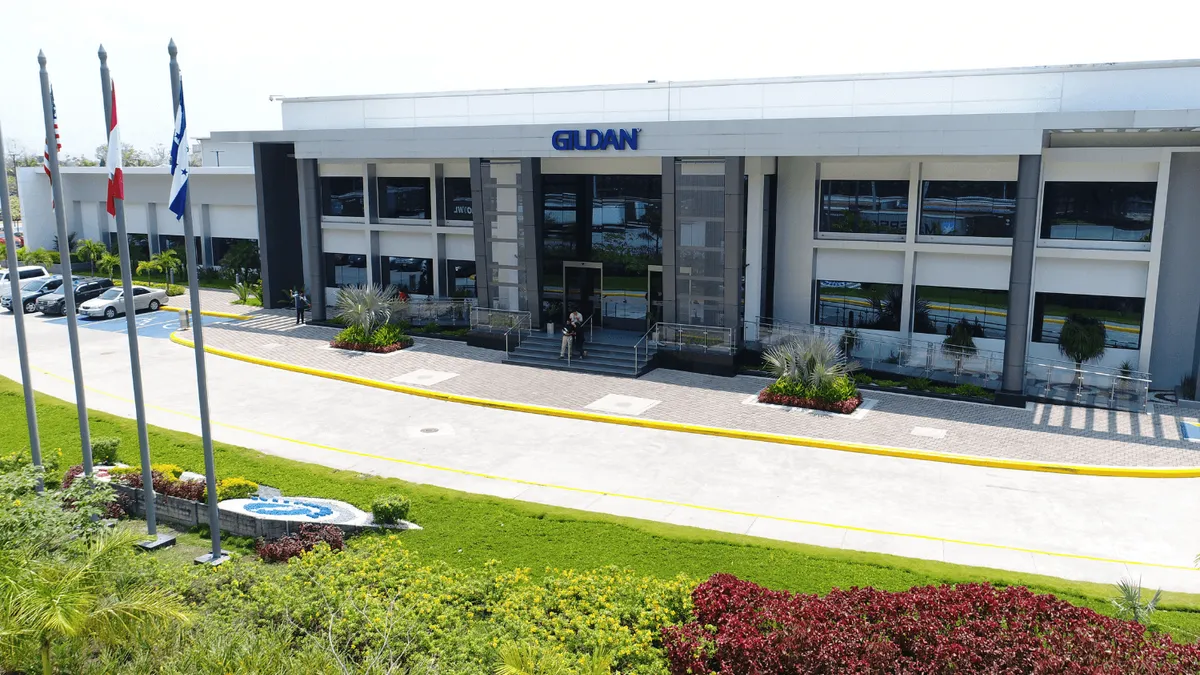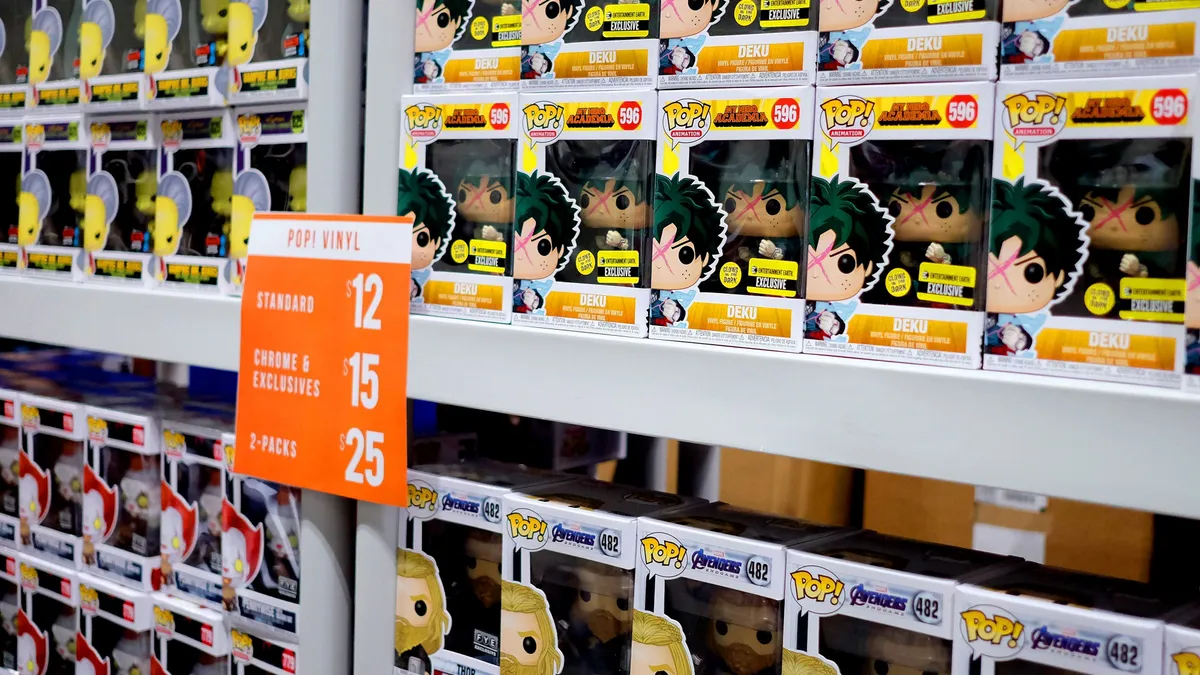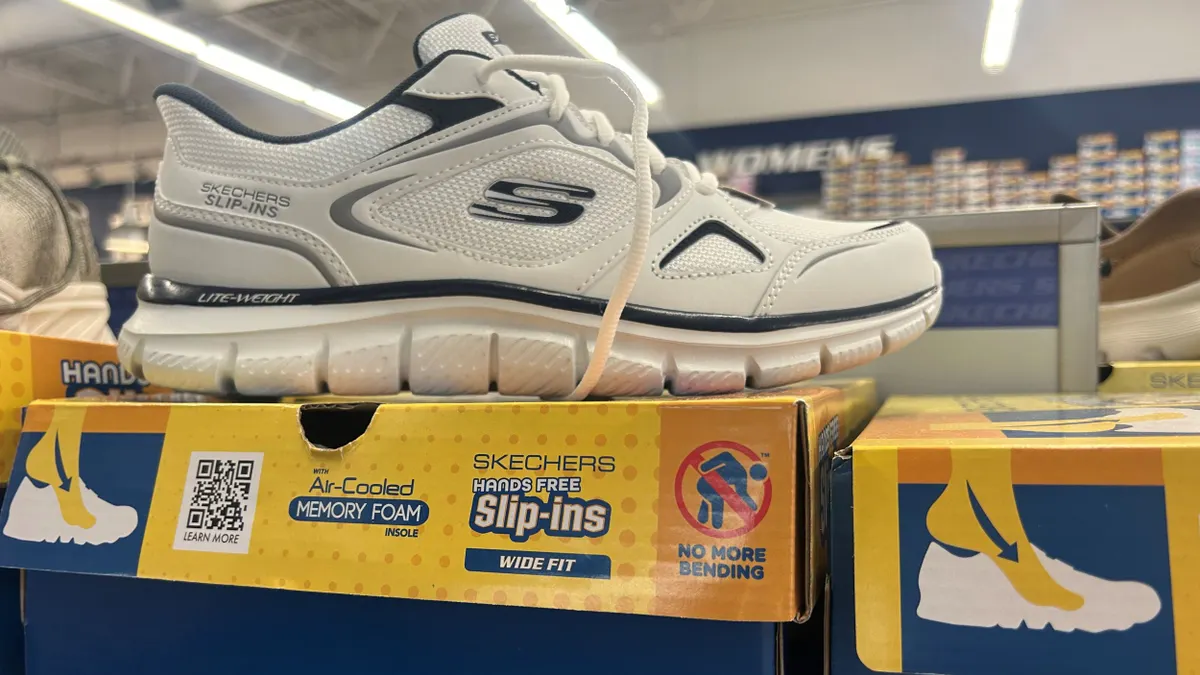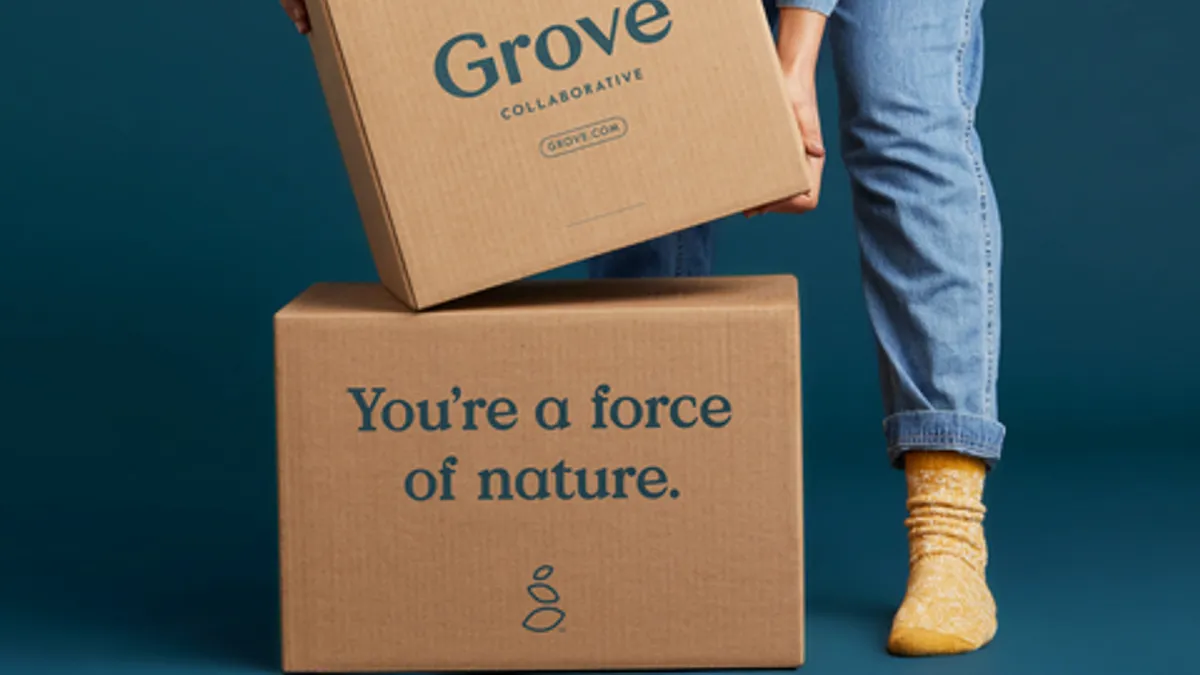“Apocalypse.” “Bloodbath.” “Deathwatch.”
There’s no shortage of hyperbole around the retail industry these days.
But as bankruptcies reach recession levels, it’s hard not to marvel, with a kind of dark awe, at the rate of financial failures among retailers as their markets upend. It’s also hard to observe the industry and not wonder who might be next.
An interest payment, debt maturity, operating loss, supplier squeeze or some combination of all of those can send a retailer into bankruptcy court. Throw in declining traffic in B- and C-class malls, competition from Amazon and off-price sellers, and changes in consumer spending preferences — and retailers have an industry-wide crisis on their hands.
This year we've seen several retailers, including rue21, Payless and Gymboree, enter bankruptcy with plans to downsize and emerge as going concerns. Their plans show creditors' faith in the underlying brands and could be hopeful signals to other struggling retailers. That said, history has not been kind to bankrupt retailers. Fitch Ratings analysts found that out of 30 retail bankruptcies going back more than a decade, half ended in liquidation, as compared to 17% across industries, according to a report emailed to Retail Dive.
We’ve taken a look at some major retailers who are struggling financially and might fall into bankruptcy in the coming months or years. These include some household names and some former giants of retail. As we’ve seen from bankruptcies and distressed retailers in the past, their fates could vary widely. They might restructure, sell off assets, go on the auction block, become wholesalers, liquidate entirely or avoid bankruptcy altogether with turnaround plans and a little luck.
The retailers on the list — by no means a comprehensive list of all retailers at risk — have C-grade bond ratings from Moody’s and Fitch, and seven of them (Sears, Claire’s Stores, Nine West, 99 Cent Stores, J. Crew and Charlotte Russe) have been listed on Fitch’s Bonds of Concern.
1. Sears
Once a commercial giant and pioneer of catalog and department store retail, Sears this year warned it might not be able to survive as a going concern. This followed years of layoffs, store closures, asset sales, operating losses, sales declines and criticism from some corners of CEO Eddie Lampert's retail acumen.
The company shocked the retail world this year when it announced the sale of its popular Craftsman brand to Black and Decker for $900 million. This year saw other moves to shore up the company’s balance sheet, including 270 store closures, 530 layoffs and agreements to restructure some debt and pension obligations. The moves will save millions in annual costs, but analysts still see long-term liquidity constraints for Sears. Fitch Ratings and Moody’s still give the company a C-grade bond rating, and Fitch analysts see significant risk that Sears could need to restructure in the next year or two.
Meanwhile Sears Canada, which split from Sears Holdings in 2014 but is still 45% owned by Lampert and his hedge fund ESL Investments and another nearly 12% owned by its former parent, has filed for creditor protection in court. The Canadian retailer plans to slash almost 3,000 jobs and close 60 stores, and eventually reemerge as a going concern.
2. Neiman Marcus
High-end department store retailer Neiman Marcus has reported sales declines every quarter for the year so far — a tough hand for a retailer weighed down by a $4.9 billion debt pile. For now, it seems Neiman Marcus is determined to forge a path forward in the distressed department store sector alone. In June, acquisition talks broke down with Hudson’s Bay, whose Saks stores frequently compete for the same customers. Hudson's Bay reportedly balked at the price for the company and was worried about its debt. (Neiman Marcus, held by a group of private equity firms, had earlier floated plans for an IPO.)
In November, the retailer lost then-CFO Donald Grimes after little more than a year on the job. Grimes’ departure followed other turnover in the c-suite in 2016, including Chief Information Officer Michael Kingston and Chief Marketing Officer Wanda Gierhart. Interim Chief Financial Officer Michael Fung, who was working on contract, left in late June. Neiman Marcus veteran Dale Stapleton is currently filling the CFO spot until the company finds a permanent replacement.
"Neiman is a walking death march," Howard Davidowitz, chairman of New York City-based retail consulting and investment banking firm Davidowitz & Associates, told Retail Dive. "That is what happens when private equity takes over. As long as you’ve got money you have the time to fix your problems, you have the luxury to fix things. If you don’t have money but have debt instead, you’re in the realm of divine intervention."
However, a Neiman Marcus spokesperson told Retail Dive in an emailed statement: “Our liquidity position is strong, despite the one-notch downgrade by S&P to CCC. As of June, we have more than $600 million in liquidity, between cash and credit card receivables and availability under our credit facilities. We believe we have sufficient resources to invest in long-term growth opportunities. We are managing our debt load and are planning for debt a maturities in 2020 and 2021.”
3. J. Crew
J. Crew underwent a massive expansion and tried to go upscale as consumers were changing their tastes, athleisure was rising in popularity and shoppers were keeping tight hold on their wallets after the recession, analysts have noted. “J. Crew made a gamble on upscale millennials by moving away from ‘preppy basics,’ which had been their brand cachet, and carrying more premium merchandise,” A.T. Kearney principal Manik Aryapadi told Retail Dive. “This move backfired, and alienated their core consumers.” The result: Declining sales, the departure of a longtime CEO and a $2 billion debt problem.
In June J. Crew announced it had wrangled some relief with a plan agreed to by most of its creditors, to swap out some of its $566.5 million debt that matures in 2019 for equity and new bonds that don’t mature until 2021. That plan, however, stalled after two lenders sued over a stipulation that lenders dismiss litigation relating to the assignment of J. Crew’s intellectual property rights, which the retailer late last year attempted to shield by transferring them to an unrestricted Cayman Islands subsidiary.
With CEO Mickey Drexler stepping down and, former West Elm President James Brett taking over, the retailer will have to decide (again) what it wants to be to customers and how to adapt to a rapidly changing retail world.
4. Eddie Bauer
Outdoor apparel retailer Eddie Bauer has survived two trips to bankruptcy court already, one in 2003 and again in 2009. In 2005, renowned U.S. bankruptcy Judge Burton Lifland called a reorganized Eddie Bauer “almost a perfect poster child of what Chapter 11 is designed to be." But the company that emerged from bankruptcy filed again less than five years later. Then-CEO Neil Fiske blamed its "crushing" debt burden. Private equity firm Golden Gate Capital ultimately acquired the company at auction for $286 million.
In June, reports broke that Eddie Bauer had hired investment banks Guggenheim Partners LLC and Financo LLC to explore strategic alternatives — i.e., a sale of the company. It had missed one acquisition opportunity in 2014, when menswear company Jos. A Bank, agreed to acquire Eddie Bauer. When Men’s Wearhouse later acquired Jos. A Bank, it dropped the Eddie Bauer deal and paid the retailer a break-up fee.
5. Vince
Luxury apparel retailer Vince has worked to adapt as a high-fashion brand. But following the company’s release of a "going concern” warning" on April 28, CEO Brendan Hoffman told investors that Vince had failed to adequately meet shoppers’ expectations for quick turnarounds on new designs as apparel sales across the sector sagged.
The going concern alert to investors came just three years after its spin off of St. Louis-based apparel manufacturer Kellwood Company and directly followed its most recent quarterly earnings report showing Vince racked up a $62.9 million operating loss during the period, due in part to the company’s struggles to meet obligations under its loan facility. In May, the company received warning from the New York Stock Exchange that Vince’s stock faced delisting.
Vince spent last year, which saw sales fall more than 11% compared to 2015, addressing design issues. As part of a turnaround effort, the company said it would revamp some existing stores, open a store in Honolulu, Hawaii, and add men's fashions to its flagship Madison Avenue store. Vince also recently launched a collection of accessories from third-party sources, including jewelry, art, bags, sunglasses and home décor items to be sold online and in Los Angeles and New York.
6. David’s Bridal
David’s Bridal has sold women’s wedding apparel and accessories for more than 60 years and says that more than 60% of all brides shop at one of its stores. But while the bridal retailer has a well known name in a fragmented industry, it faces mounting competition. And the pressure on sales has exacerbated liquidity issues.
In September the company’s then-CEO Pamela Wallack left the job after three years. (She later joined children’s apparel retailer The Children’s Place.) Paul Pressler, a former Gap CEO who resigned amid performance issues, replaced Wallack in the CEO spot.
Last year, Teamster members and consumer activists protested the company and warned about its finances at the Washington, D.C.’s Great Bridal Expo. Moody’s analysts expected the company to suffer in 2016 from a website redesign that hurt its positioning in search engine results. And even as David’s Bridal planned to reduce promotional pricing, Moody’s analysts wrote in March there was risk that efforts to improve profit “may not be sufficient to de-lever the company towards a sustainable level." Being a niche retailer also constrains the company’s ability to scale and boost revenue. All that said, David's Bridal has no loan maturities due — often a tipping point for bankruptcy — until 2019, according to Moody’s.
7. Nine West
Women’s fashion retailer and wholesaler Nine West has been losing market share amid softening apparel sales and competition from e-commerce players.
In giving the retailer’s debt a C-level rating, Moody’s points to the company’s lackluster financial performance together with a “very high debt and leverage burden” that makes for an “unsustainable” capital structure and high chance of default. Moreover, the company’s retail operations have been on the downslide for years and operates in a “challenged moderate price department store sector which we believe will make revenue growth difficult,” Moody’s analysts wrote in March.
Private equity firm Sycamore acquired Nine West in 2014 as part of a $2.2 billion buyout of the Jones Group. Around $1.7 billion in debt remains as a legacy from the leveraged buyout. Last fall, sources told Bloomberg that restructuring firms had approached Nine West with proposals to reduce its debt. In May, the company announced it had retained investment bank Lazard to evaluate a long-term capital structure solution.
In a press release at the time, Nine West emphasized it had no near-term debt maturities, was in compliance with the agreements governing its debt and had ample liquidity ($160 million as of Dec. 31 last year) to continue to operate in the ordinary course of business. As of June, Nine West remained on Fitch’s Bonds of Concern list.
8. Claire’s Stores
Teen and tween-focused Claire’s Stores calls itself a “girl’s best friend,” but girls and young women have plenty other options these days, among them H&M, Forever 21 and Zara, as well as discount and online players. Trying to free up cash and stem losses, the company closed 166 stores last year because they were unprofitable or the lease terms weren’t favorable.
Like many retailers in trouble, private equity ownership appears to have added to Claire’s Stores woes. Apollo Global Management took Claire's private in 2007 in a $3.1 billion leveraged buyout. The retailer has already refinanced some debt to delay interest payments. Earlier this year, credit rating firm Fitch Ratings listed Claire’s among retailers on its “Bonds of Concern” list.
Claire's is working to improve results in its Icing stores and has scaled back its promotional activity, executives told analysts in April. That has resulted in lower sales but higher margins compared to 2015. For 2016, the company posted net income of $53.9 million compared to a net loss of $236.4 million in 2015. And while the company has positive cash flow, it says that much of its cash goes to paying its debt, which makes it hard for any retailer to compete in the current climate.
9. 99 Cents Only
99 Cents Only Stores operate in a low-margin space that’s only gotten more competitive as Dollar General, Dollar Tree, Walmart and others battle for market share.
The 35-year-old chain is yet another struggling retailer owned by private equity. (Ares Management, the Canadian Pension Plan Investment Board and the Gold-Schiffer family bought the chain out in January 2012.) Despite the discount retailer’s high leverage and debt rates, it has seen some success in improving performance. In June, the company reported a net sales increase of 6.7% and same-store sales increase of 6.9%, which CEO and President Geoffrey Covert attributed to improvements in merchandising and stocking as well as improved logistics execution and reduced shrink.
Moody’s analysts also point out that 99 Cents Only has installed a perpetual inventory system and has seen positive same-store sales growth for the past three quarters. Yet, the company is still losing money. It racked up an $8.8 million net loss for its first quarter of fiscal 2018 — but even that is a major improvement compared to the prior-year period’s loss of $25.2 million. The retailer reported a $20.9 million net loss for fiscal 2017 and an $18.4 million loss in 2016.
10. Charlotte Russe
As a mall-based, teen apparel retailer owned by private equity, Charlotte Russe fits the mold of struggling retailers almost perfectly. In 2009, at the time of the $380 million take-private buyout by Advent International, Charlotte Russe operated 500 stores and was already facing, in the words of the Wall Street Journal, a “very competitive market in a treacherous retail environment” for niche retail that was filling up with fast-fashion sellers like Forever 21 and H&M. Today the retailer’s store footprint is roughly the same but its financial prospects have fallen. Fitch lists the company’s debt on its “Bonds of Concern” list.
The teen retailer has, however, made some headway with e-commerce efforts. In March, its native mobile app, launched in summer 2016, hit one million downloads, according to Women's Wear Daily.
Editor’s note: Retail Dive's "The running list of 2017 retail apocalypse victims" is a comprehensive tally of retailers that have succumbed to financial pressures this year. We will update this list to reflect major retailers that have filed for Chapter 11 bankruptcy protection going forward.
Editor's note: This story has been updated.








